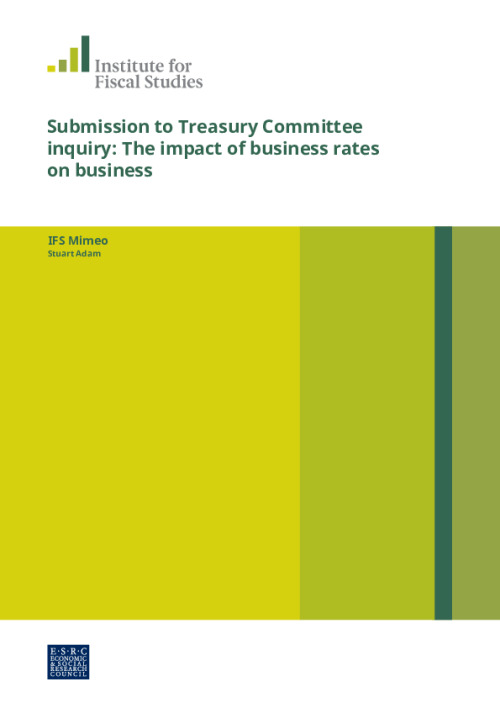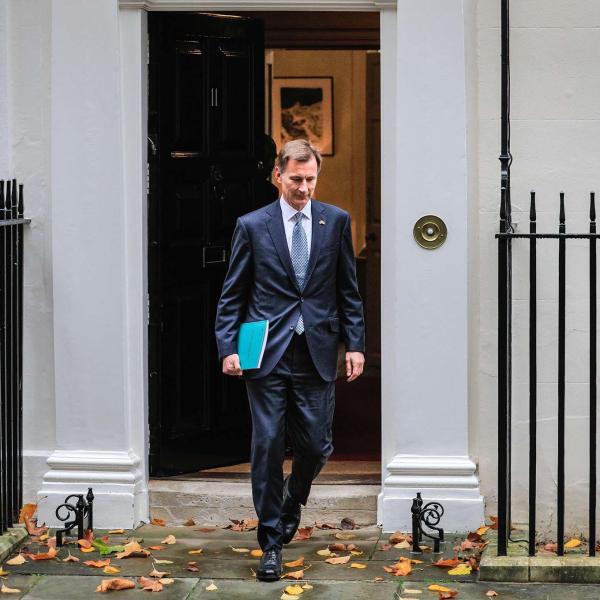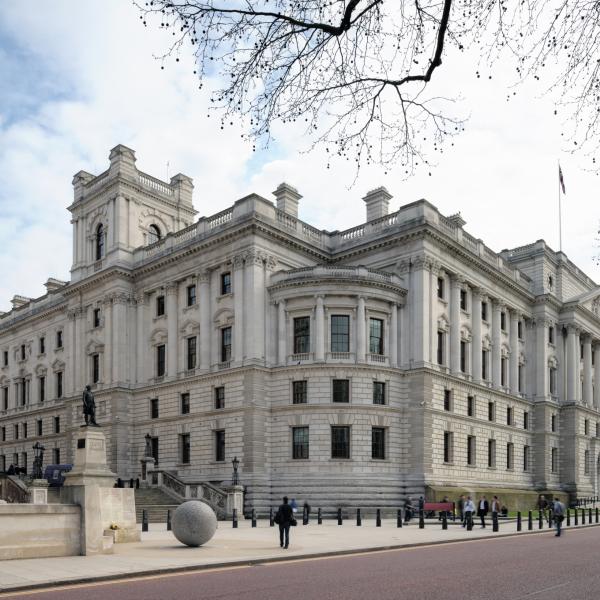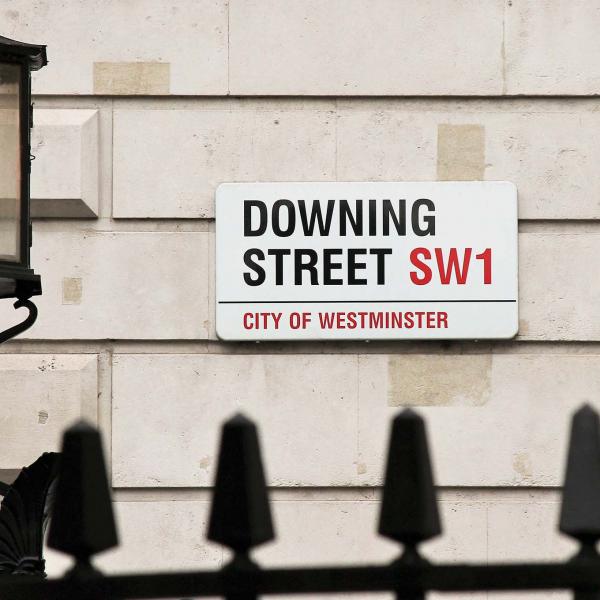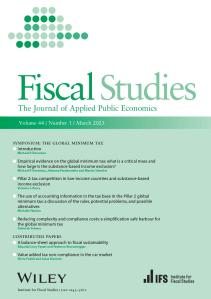Submission to Treasury Committee inquiry: The impact of business rates on business
Stuart Adam, Institute for Fiscal Studies (IFS)
5 April 2019
1. This submission necessarily covers a wide range of issues rather briefly. Much of it draws on previous work published in Chapter 16 of Tax by Design, the final report of the Mirrlees Review of the tax system (Mirrlees et al., 2011) and in Chapter 11 of the IFS Green Budget 2014 (Adam and Miller, 2014), which develop some of these points in more detail. Given space constraints, we do not address the local government finance aspects of business rates and associated reforms such as business rates retention; aspects of those are discussed in Amin Smith, Phillips and Simpson (2018) and Amin Smith and Phillips (2019). We would be happy to provide further written or oral evidence on any of these issues to the committee.
2. The comments below are divided into four sections. I begin by discussing the effects of business rates on rents and the high street. I then assess business rates against the criteria for good tax policy set out in the inquiry’s terms of reference, before commenting briefly on reforms introduced since 2017. The final section discusses the case for adopting various alternatives to property-based business taxes.
Business rates, rents and the high street
3. Business rates are not killing the high street – at least, not to the extent, or for the reasons, that many seem to think.
4. High-street retailers are certainly struggling to cope with online competition. And a big part of that is undoubtedly their higher cost of premises. But the contribution of business rates to that higher cost isn't as simple and obvious as it might seem.
5. Business rates are an annual tax levied on the occupiers of business properties – shops, offices, factories, warehouses and so on – as a percentage of the estimated market rental value of the property. This system appears to give online retailers a competitive advantage. They will have to pay some rates on their UK warehouses but, relative to their turnover, a great deal less than high street shops. However, looking at the tax bill in isolation gives a partial and misleading picture. We must also think about the less direct effects the tax has – in particular, via its effect on rents and property prices.
6. Economic theory predicts that, in the long run, (higher) business rates will mostly be reflected in (lower) rents, passing the burden of the tax from the occupiers of property to the owners.
7. Prices in a competitive market are determined by supply and demand. The effect of a tax on prices – and therefore whether the tax is borne by the buyer or the seller – depends on the relative elasticities of supply and demand, i.e. whether supply or demand responds more to prices.
8. The supply of business property is relatively unresponsive to price, primarily because of a combination of a fixed supply of land and a restrictive planning regime. Demand for business property is much more responsive. As a result, in the long run we would expect a tax such as business rates to be incident largely on those supplying property (the owners) rather than those demanding it (the occupiers).
9. In more concrete terms: the need to pay business rates will reduce the amount that businesses are willing to pay to rent a property (and they have other options if the rent is unacceptably high, such as using smaller or less well located premises, moving the business online, or simply closing down). In contrast, in the long run the owners of the property have little choice but to accept lower rent, as there is little else they can do with the property (leaving it empty would mean they got no rent at all; they could sell it, but the new owners would be in the same position – and so the sale price of the property would be commensurately lower anyway). Indeed, since the future sale price of a property will be lower by dint of the tax liability attached to it, it is the initial owner, rather than subsequent owners, who is worse off as a result of business rates.
10. In the long run, business rates will be mostly reflected in rents. If business rates weren't there, the total cost of premises wouldn't be much lower. The existence of business rates therefore probably isn't a big contributor to the long-term decline of the high street. An individual business might be struggling to compete with an online rival, might see that they have costs that the online competitor doesn't face, might observe that their business rates bill is a large part of those extra costs, and might conclude that business rates are much of what's driving them under. They might not realise that if the business rates bill weren't there, their rent would probably be almost pound-for-pound higher, so most of their cost disadvantage would still be there and they'd still be struggling to compete with their online rival. Factoring in this market adjustment is the insight that economics brings to the table. There are, however, several caveats to this arguments.
11. First, even in the long run, business rates will not be completely passed on to owners via rents, and will have some effects on the businesses occupying properties.
12. Business rates can be thought of as a combination of a tax on the value of land and a tax on the value of the buildings which occupy the land. The value of the land is driven by its size and location, and in prime locations land value is likely to account for the majority of the total property value.
13. The land itself is in fixed supply, and there is little the owner can do to change its value – which depends on its location and surrounding amenities etc. – so the logic of the argument above applies in full: prices will adjust so that the tax is borne entirely by the owner.
14. The buildings themselves, however, are not in fixed supply, so business rates discourage the development and improvement of business property (though other factors such as the planning regime may be more important). Such investments are less worthwhile when business rates make the development that results less valuable.
15. Business rates result in less property being developed and used for business purposes. That reduced supply of property – its greater scarcity – means that its rental price will be higher. So to some extent business rates do raise the cost of premises and reduce the amount of property-intensive activity (such as bricks-and-mortar retail) in the economy, a real downside of business rates. But that knock-on effect on rents via the greater scarcity of buildings is clearly second-order, relative to the simplistic claim that the entire business rates bill is an additional cost of doing business.
16. Second, the short-run effects of business rate changes are different. Rents might not adjust very quickly as firms are tied into rental contracts, and until rents do adjust it is the occupier who faces the extra cost if business rates increase. Commercial tenancies are much shorter now than (say) 30 years ago, so rents should adjust more quickly than in the past. There are also mechanisms like Commercial Voluntary Arrangements that can facilitate adjustment. And landlords are sometimes willing to reduce rents mid-contract if the alternative is their tenant going bust, since if the property is already being put to its best use and is unprofitable then the alternative might be for it to sit empty, which does the landlord no favours. Nevertheless, sudden business rates rise can cause real problems for firms in the short run.
17. It is worth noting at this point, however, that – contrary to much reporting – there has not been a big rise in business rates overall. The revaluation that took effect in 2017 was a redistribution of liabilities, not an overall increase. For every firm forced to close down because of a business rate rise, there may be another that would have gone under if it weren't for a business rate cut – but the latter won't make the news. Moreover, the nature of revaluation is that those seeing tax rises will tend to have been those whose locations had become more profitable while those getting tax cuts were those whose locations had become less profitable, so if anything revaluation should help to align bills more closely with ability to pay.
18. Third, the effects of temporary changes can also be different. Rents are unlikely to respond to, say, a one-year-only reduction in business rates, so the benefits of such a giveaway are more likely to accrue to the occupier. However, repeated ‘temporary’ reliefs – such as we have seen recently in England – can make people believe that further repeats are likely, or that they might even become permanent; to the extent that owners and occupiers expect such future changes, they are more likely to get ‘priced in’ to rents.
19. Fourth, permanent reliefs for a particular sector (such as retail or pubs) may benefit that sector even in the long run, to a greater extent than an across-the-board cut. This is because the supply of any one kind of property is more responsive than the supply of property in general, since properties can be converted between different uses. But insofar as the overall supply of business property is unresponsive, sector-specific reliefs benefit those sectors only at the expense of other sectors, and only to the extent that properties can be shifted between uses that do and don’t attract relief. If shops can only ever be shops, then a permanent business rates relief for shops will (in the long run) feed through to higher rents for shops, the benefit mostly going to the landlord rather than the retailer. But if (say) shops can easily be converted to/from offices, then the relief will lead to more properties becoming (or remaining) shops rather than offices, and rents on both shops and offices will rise to a lesser degree; hence the overall benefit will still be felt by owners in higher rents, but for shop-based businesses the relief will outweigh the modest increase in rents, whereas office-based businesses will suffer an increase in rents with no offsetting business rate relief: thus the relief redistributes from office occupiers to shop occupiers and results in more shops and fewer offices.
20. Empirical evidence on the effects of business rates is somewhat limited, but such evidence as we have supports the theory to a remarkable degree. In an old study of how rents changed after a reform to business rates, Bond et al. (1996) concluded that ‘much of the burden of business rates is shifted on to property owners in the long run. However, the short-run impact of changes to business rates affects tenants more than landlords’. In a more recent study for HM Treasury and HMRC of the effects of business rates relief for Enterprise Zones, Cambridge Econometrics (2008) wrote: ‘The main conclusion is that 100% of the benefits from [business rates] relief are passed into rents and therefore accrue to landlords, although the range of uncertainty surrounding this statistical estimate puts the boundary at somewhere between 65% and 150%. Either way, the general conclusion is that the majority of tax-saving benefits from [the business rates] exemption [for Enterprise Zones] accrued to landlords rather than to tenants.’ Other evidence from the UK and abroad generally bears out similar conclusions.
Assessing business rates
21. How does business rates measure up against the criteria for good tax policy set out in the inquiry’s terms of reference: fairness, supporting growth and encouraging competition (and economic efficiency more broadly), certainty, and coherence?
22. Fairness is to some extent in the eye of the beholder. The IFS does not have views on who should bear how much of the tax burden. However, assessments of fairness may be affected by our contention that the burden of business rates is borne largely by the owner of the property at the time the tax (or tax change) is introduced.
23. Those occupying the property actually have to pay the tax, but see that offset by lower rent than they would otherwise have to pay. And because the property yields lower rent, buyers will pay less for it, so the return on their investment is largely protected. It is the initial owner who sees the value of their property reduced: they cannot get as much either from renting out or from selling their property as they would without the tax, and if they occupy the property themselves then they must of course pay the tax themselves.
24. If we were introducing business rates now, one could argue that this would be unfair: why impose windfall losses on owners of one particular asset (business property) rather than others?
25. But business rates have been in place for many years. We cannot go back and compensate those who originally lost from their introduction. Abolishing business rates now would mean giving windfall gains to the current owners of business properties, who will not necessarily have suffered from business rates: they will have acquired the property at a lower price in recognition of the annual tax payments (and therefore lower rent) associated with it. If considering abolishing business rates versus continuing to levy them as expected, the question is whether one thinks it is fair to use taxpayers’ money to give those current property owners an unexpected boost to the value of their property.
26. That is a very different question from the – perhaps more natural – one of whether it is fair to levy a tax on bricks-and-mortar businesses that online businesses do not have to pay.
27. Economic efficiency, including the effects on growth and competition, depends on how business rates affect behaviour. In this respect, it is useful to return to our earlier characterisation of business rates as a combination of a land tax and a buildings tax. The part that is levied on land value is about as efficient as a tax can be: the supply of land is essentially fixed and there is little the owner can do to change its value, so taxing land simply makes it less valuable to its owner without discouraging any desirable activity. (One slight wrinkle to this argument is that levying a tax on land designated for business use can affect incentives to apply for permission to use the land for other purposes instead, such as housing. This also depends on the relative taxes associated with those other uses, such as council tax on housing, and can be addressed through the planning system. This point is developed on pp.371–372 of Mirrlees et al., 2011.)
28. The part that is levied on buildings, in contrast, is particularly inefficient. A basic tenet of the economics of taxation is that intermediate inputs to production – that is, inputs that are themselves the result of an earlier production process, such as buildings – should not be taxed. The principal effect of business rates is that economic activity in the UK is artificially skewed away from property development and property-intensive production.
29. Certainty is a criterion by which business rates used to score well, but no longer. For all their imperfections, business rates had been one of the most stable parts of the tax system, barely changing at all for 20 years from when they were brought under central government control in 1990. Since 2010, however, they have been subject to constant tinkering. Revaluation has been delayed and then made more frequent; uprating has been reduced below inflation and then the inflation measure changed; new or more generous reliefs have been announced for rural properties, Enterprise Zones and public lavatories, and a series of ‘temporary’ additional reliefs has been introduced for low-value properties, retailers, pubs, empty new-build properties, and so on – some of which have been one-off, some repeatedly extended, some allowed to expire but then repeated in slightly altered form, and some ultimately made permanent.
30. It has rarely been clear why the temporary policies, if desirable at all, should be desirable only for a particular period: for example, will retailers be struggling any less with online competition when the current relief for them expires in 2021? Instability has costs. The increasing unpredictability of business rates makes it more difficult to assess investment opportunities and negotiate contracts. And constant change invites lobbying for special treatment as every sector senses an opportunity to seek tax reductions for their particular deserving cause.
Assessing reforms since 2017
31. There is not space here for a comprehensive assessment of all recent reforms to business rates. What follows are just a few remarks on some of the main changes.
32. The revaluation that took effect in 2017 was overdue: it is important to keep tax bases up to date and delaying revaluation just stores up problems, as the increasingly farcical position with the continued use of 1991 valuations for council tax highlights. The provision of enhanced transitional relief was a genuinely helpful way to ease the burden on those hardest hit by revaluation, though of course other worthwhile uses of funds were also available and it bears repeating that revaluation created as many gains as losses.
33. Some subsequent reforms represent a clear improvement. Increasing the frequency of revaluations should mean that changes to business rates bills become more incremental, routine and predictable, less subject to sudden wild changes than when changes are kept pent up for longer periods (though transitional protection somewhat lessens the latter problem) – albeit at some additional administrative cost. Moving to CPI inflation uprating rather than using the discredited RPI measure is also welcome.
34. It is harder to give a brief assessment of the (permanently) more generous reliefs for lower-value properties introduced in April 2017 or the (temporarily) more generous relief for lower-value retail properties that takes effect this month. Certainly the distributional argument for supporting low-income households does not translate directly into an argument for supporting businesses that own or occupy low-value premises. Whether there is a benefit to wider society from having smaller and/or more retail-focused businesses than the market would otherwise generate, and whether tax reliefs based on the value of property occupied are the best way to achieve such aims, are open to debate. But neither the social value of small retailers nor the threat to high streets from the internet looks like a temporary two-year issue, so it is hard to see why a two-year relief is an appropriate response. Apparently policymakers have believed that retailers in lower-value premises merited preferential treatment in 2014–15 and 2015–16 (when a previous temporary relief applied) and again in 2019–20 and 2020–21, but not before, afterwards, or in between.
Business rates versus alternatives
35. In light of the argument above for the efficiency of taxing land and the inefficiency of taxing buildings, it would in principle be desirable to replace business rates with a land value tax on non-residential property. This would not necessarily directly reduce tax bills for high-street retailers and increase them for online firms – on the contrary, bills would rise for small properties in prime locations and fall for big properties in remote locations. But those changes would largely be felt as one-off windfall gains/losses by land-owners in the respective locations. The fundamental effect of the change would be to remove a disincentive to business property development in all locations, reducing the cost of premises and ultimately promoting more property-incentive economic activity (including bricks-and-mortar retail). Some questions remain about the practical feasibility of accurately valuing land separately from the buildings on it, but some other countries have experience of operating land value taxes, and the case for a thorough official effort to design a workable system for England (and Scotland, Wales and Northern Ireland) seems compelling.
36. However, if a move to land value taxation is ruled out for whatever reason, it is not clear that we should abolish the taxation of business property altogether, throwing out the land tax baby with the buildings tax bathwater.
37. Alternative taxes create losers and inefficiencies as well. General (broad-based) income and sales taxes, for example, discourage production and consumption. They would not discriminate between bricks-and-mortar and online activity – would not distort the form of business activity in the way that business rates do – but they would do more to disincentivise work and business activity overall.
38. More targeted taxes, such as the digital services tax announced in the last Budget (which should perhaps be better seen in the context of corporation tax than business rates), or the online sales tax and the ‘green taxes’ on deliveries and packaging that the Housing, Communities and Local Government Committee recently recommended for urgent assessment, would have their own problems. We cannot comment on every possible option here; but in general we note that any such targeted tax must be justified by a clear and specific market failure that cannot be better addressed in another way and that outweighs the additional complexity that would be created.
39. Even without moving to a land value tax, however, business rates could be improved. Again, I do not assess all possible options here. Some reforms that might be worth considering (but merit a full analysis of pros and cons) include:
• Linking business rates to local property price indices in between revaluations;
• Re-examining the justification for existing reliefs such as those for vacant land, agricultural property and low-value properties;
• Changing the formal liability from the occupier to the owner of the property, to make its ultimate incidence more transparent and reduce the frictions associated with slow rent adjustment (though such a shift would itself generate a considerable change in rents).
40. Finally, while well-thought-through reforms would still be worthwhile, I would again emphasise the value of returning to greater stability in business rates policy. Constant tinkering with complex and/or temporary tax policies does not make for a healthy business environment.
References
Adam, S. and H. Miller, ‘Business rates’ in in C. Emmerson, P. Johnson and H. Miller (eds), The IFS Green Budget: February 2014, http://www.ifs.org.uk/budgets/gb2014/gb2014_ch11.pdf
Amin Smith, N., D. Phillips and P. Simpson, ‘Spending needs, tax revenue capacity and the business rates retention scheme’, IFS Report R141, https://www.ifs.org.uk/publications/10542
Amin Smith, N. and D. Phillips, ‘Response to the Ministry of Housing, Communities and Local Government’s consultation on the reform of the business rates retention scheme’, mimeo, 2019, https://www.ifs.org.uk/publications/13915
Bond, S., K. Denny, J. Hall and W. McCluskey, ‘Who pays business rates?’, Fiscal Studies, 1996, 17(1), 19–35, http://www.ifs.org.uk/publications/1562
Cambridge Econometrics, ‘The relationship between national non-domestic rates and rents on commercial property: empirical evidence from enterprise zones’, HM Treasury / HM Revenue and Customs, 2008, https://webarchive.nationalarchives.gov.uk/20080727055859/
http://www.hmrc.gov.uk/research/report42.pdf
Mirrlees, J., S.Adam, T.Besley, R. Blundell, S. Bond, R. Chote, M. Gammie, P. Johnson, G. Myles and J. Poterba, Tax by Design: The Mirrlees Review, Oxford University Press for the Institute for Fiscal Studies, Oxford, 2011, http://www.ifs.org.uk/publications/mirrleesreview/
